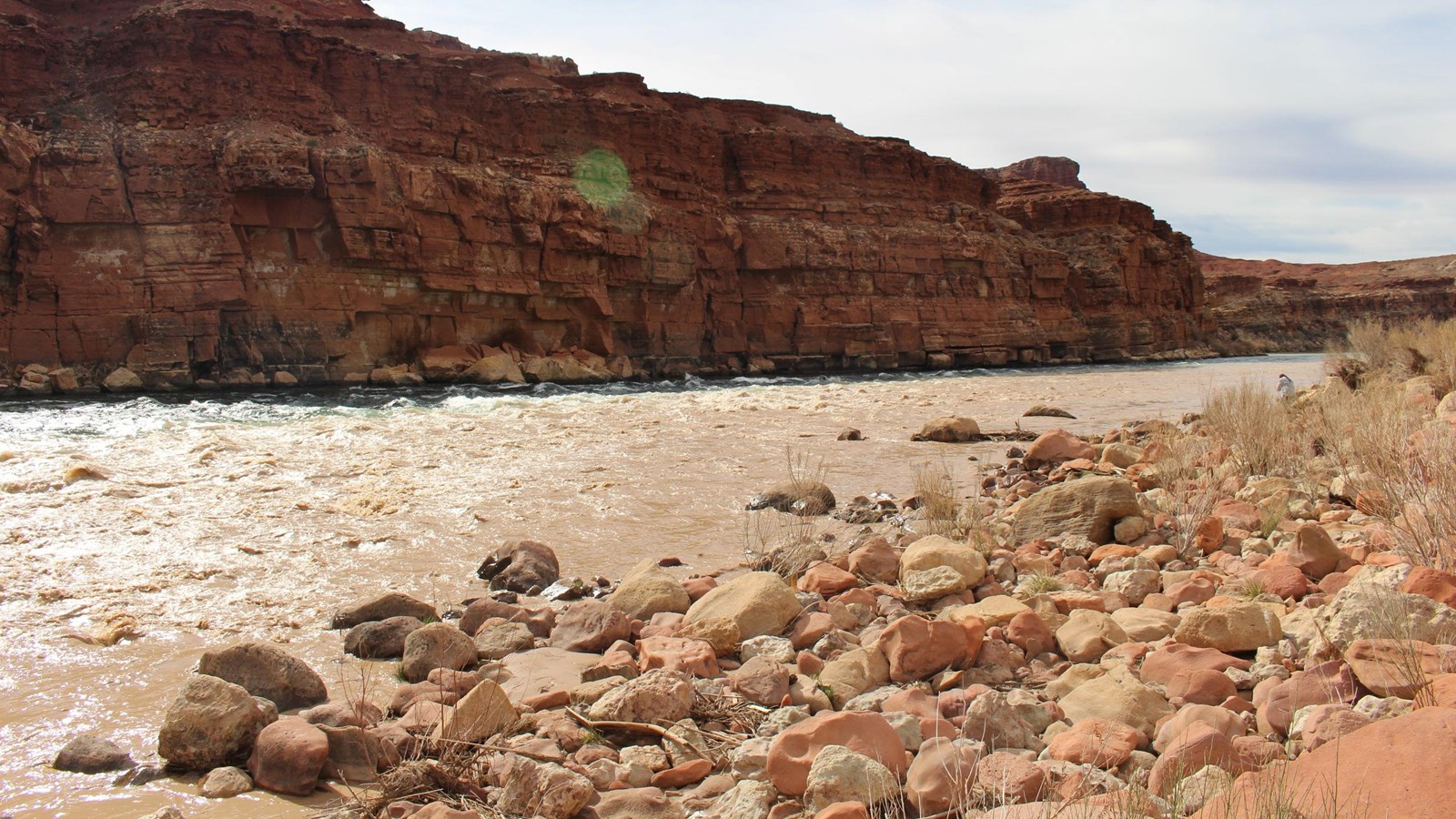Last updated: July 17, 2024
Place
Paria Riffle and the Colorado River

NPS
Quick Facts
Location:
Lees Ferry, AZ
Significance:
Scenic View
Amenities
9 listed
Beach/Water Access, Historical/Interpretive Information/Exhibits, Parking - Auto, Parking - Boat Trailer, Parking - Bus/RV, Restroom - Accessible, Scenic View/Photo Spot, Toilet - Vault/Composting, Trash/Litter Receptacles
Building a Rapid
Passing over a riffle—bump, bump, bump, -- feels very different from plunging into a rapid’s churning whitewater. But as a basic level, a riffle and a rapid are much the same. Both are formed were a tributary flows into a main river, as the Paria river does here. Tributaries deposit sediment into the river channel. During floods this could include large boulders and rocks as well as sand and gravel. The debris clutters the river bottom and constricts the channel, forcing the river to gain speed and power. The river swirls thought or crashes over the debris-strewn riverbed, forming mild riffles or deadly crushing rapids. Paria Riffle is the first turbulence faced by boaters on their Grand Canyon river journey. Once through, over 90 named features still await them, and the rapids only get bigger. A flash flood may completely change a rapid overnight. Even on calm days, you can see the muddy Paria river depositing sediment into the clear Colorado River.A "Secret Beach"
Hey anglers - this is one of few spots on Glen Canyon where you can go fishing without a boat. As the turbulent water mingles, hook yourself a rainbow trout! Always follow Arizona fishing regulations, and special Colorado River regulations.
You don't need a fishing pole to touch water here. Bring a beach chair and sit on the sand, listen to the rushing water. Ahhh.
Overnight camping here is not permitted.
